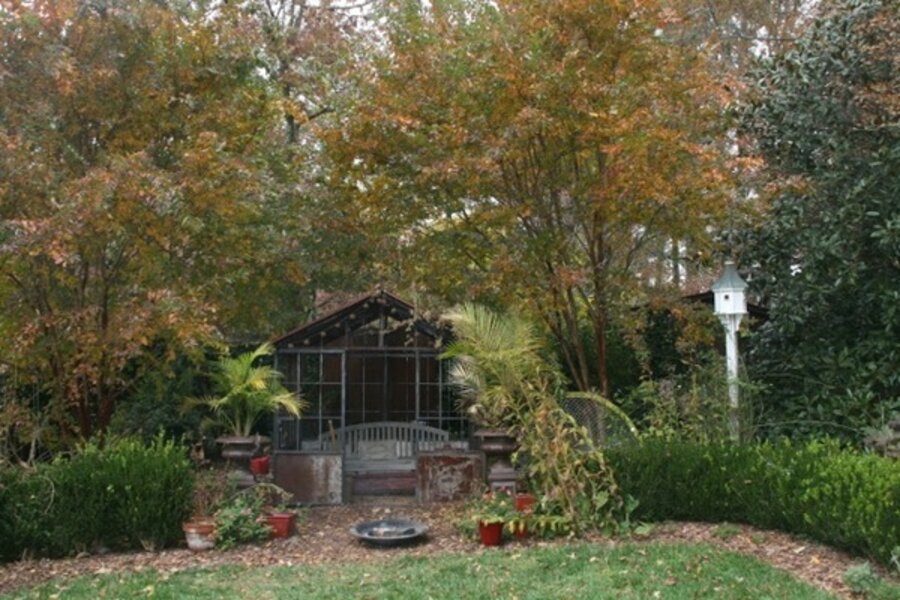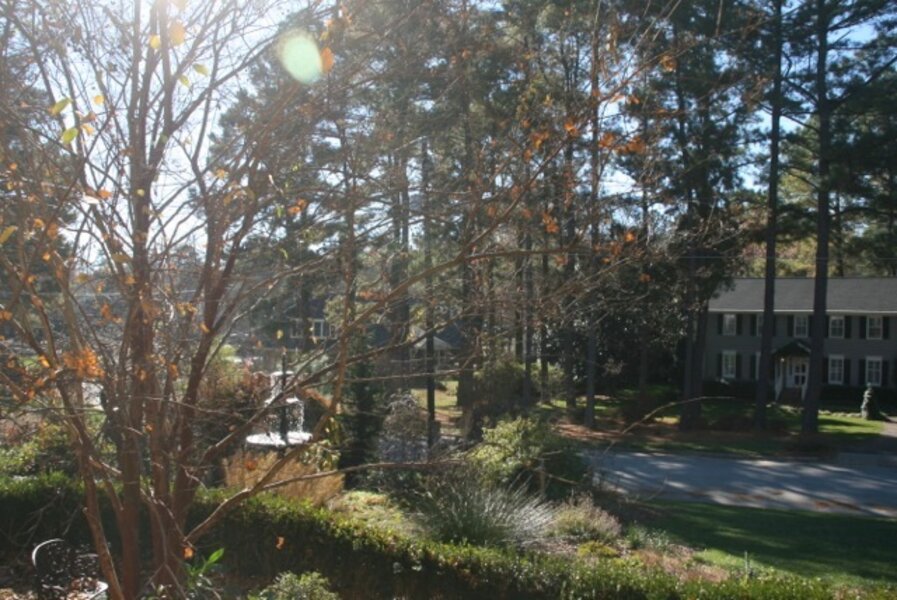The balance of light in the garden
Loading...
Fall
As I mourn the loss of daylight hours, I relish the gain in light with each leaf that falls. Autumn begins my survival for winter; without the leaves decent, I would be frightened by the lack of luster that only bright light can bring.
Each time I step outside, more light appears. It’s slow, but apparent. Light seems to change just when I need it to. It’s as if nature is adjusting a balance -- tree canopies sit on the left pan of the scale, light sits on the right. Brightness is balanced as the trees' leaves fall. If the hours in the day are to lessen, then the leaves must move to bring in brightness.
It may seem like a dichotomy for someone to be claustrophobic and to seek cover of nature’s cocooning, but I do. There’s comfort under the canopy of trees. [See first photo above.] Shielded from the light, cooled by shade, and relaxed by the regulated radiance, trees' leaves give me contentment.
I’m also equally content sitting on the ground under an open sky, particularly in the winter.
Even though the falling leaves of autumn are warning us of winter to come, this process is a welcome necessity to balance the light for the shorter days. When it happens, I’m reminded of how much I miss the openness of the garden. [See second photo above. Click on the arrow at the right base of the first photo to see the second and third photos.]
Winter
If I can’t control the length of day, I’m happy to lend a hand in the amount of light that lands on my garden, Helen’s Haven. Deciduous trees have been planted so I can balance the light in my winter garden and my mood. Creating seasonal tenor with the change in flora builds a better garden through diversity, and a way to add seasonal interest.
Even with the shorter days, I welcome winter to view the open garden. My garden is exposed and bright, the branches of the trees are bare and open for inspection. [See third photo above.] As I look up in my winter garden, the framework of my summer’s cathedral-like canopy forms uncluttered lines of communication for confessions. I share all of my professions as I tend to my land. Winter is not my favorite season, but I built a garden that allows me to enjoy this time more than I ever thought possible.
Spring
Just when I need it the most, the scale begins to tip. The days are growing longer and the trees begin to leaf. The leaves tend to improve my mood. Life all around me stirs as the days lengthen. Fresh and bright, most trees have glowing green leaves in spring. This wonder has me looking up to slowly watch the sky close in. As days broaden, the balance changes -- the tree canopy on the left pan of the scale fills in, the light on the right balances out. It’s perfection at its best.
Summer
The cloak of summer’s canopy -- with a cathedral-like quality -- reveals greenery hovering down, allowing sunlight to lightly kiss my cheek. The leaves of the trees are welcomed in summer to manage heat, intensity, and length of the season. Comfort is sought under the canopy of the trees.
Then the cycle begins again.
If you’ve lived in an area for a period of time, you become programed to the seasons. Just when you’re ready for a change, the scales begin to tip, and it’s always in my favor.
-----
Helen Yoest is one of more than a dozen garden experts who blog regularly at Diggin' It. She lives in North Carolina and is the author of the book "Gardening With Confidence -- 50 Ways to Add Style for Personal Creativity." She's a garden writer, speaker, and garden coach. She's also a field editor for Better Homes and Gardens and Country Gardens magazines and serves on the board of advisers for the JC Raulston Arboretum. You can follow Helen on Twitter and Facebook. To read more by Helen here at Diggin' It, click here.









